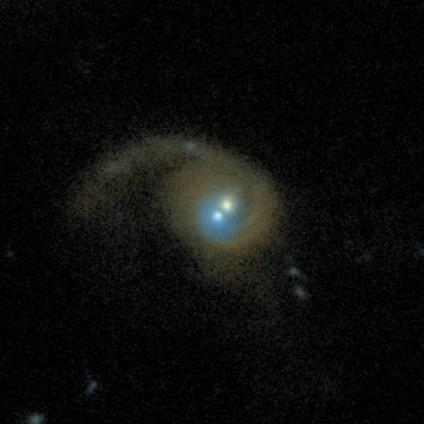
credit: galaxy zoo.org
Astronomers know that there are galaxies that contain not only one supermassive black hole, but two! In this case, the two black holes are usually 3,000 light years apart from each other, a distance that roughly corresponds to the 1/8 of distance from our solar system to the center of our galaxy.
Only a small number of such systems have been detected so far. Using observations from the Hubble Space Telescope and Chandra Observatory, astrophysicist Julie Comerford at the University of Colorado recently announced the discovery of 6 galaxies that host dual supermassive black holes.
Supermassive black holes reside at the cores of galaxies and have mass a few million times that of the sun. They grow by consuming nearby material, but no one really knows how they reach their enormous weight. A possible scenario is that they mainly grow through black hole mergers when two galaxies collide. In this occasion a lot of fuel becomes available and is funneled toward the black holes. The two black holes finally form into a larger supermassive black hole, releasing huge amounts of energy in the form of gravitational waves. The exact details of this mechanism are unclear though. Understanding this impressive phenomenon will help us understand not only how black holes grow and evolve but also their host galaxies.
Source: Space.com
